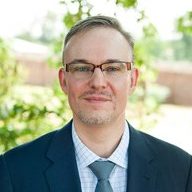An easy error for a historian to commit is to equate or link events or movements in history that are similar, while ignoring or underplaying their differences. One example of this is when historians of worship note that modern negative reactions to contemporary pop-rock worship contain similar objections to ones leveled against the hymns of Luther, and later, Charles Wesley and Isaac Watts. Without question, there are similarities. What a lazy historian fails to notice is when the differences are greater than the similarities.
That can be said about the roots of Pentecostal worship, found in the populist religious mood that swept America in the late 1780s, through to the 19th century. Yes, there are many parallels to earlier reactions against ossified liturgical forms that sparked more colloquial and lay-driven worship (e.g., some Waldensians and Lollards, some Anabaptists, the Moravians). But there are differences to previous reformations of worship that far outweigh the similarities. When we examine those differences, we will find that the seedbed from which Pentecostalism grew in the 1900s was actually a considerable departure from prior worship reformers such as Luther, Wesley and Watts.
Nathan Hatch detects four waves of populist folk religious music in America from 1780 to 1830. The first was among Separatist Baptists in rural New England. Some of the early hymnals of these Baptists maintained continuity with the hymns of Watts and others, but a flood of hymnbooks published by Elias Smith between 1804 and 1820 contained no overlap with the accepted hymnals of the day. Original and catchy lyrics linked to popular folk tunes became the new tradition of rural New England Baptists.
The second wave of populist worship was Methodist revivalism. The Wesleys had taught the importance of the participation of all people, but had also insisted that hymns maintain dignity and reverence. But Methodism in America during the early 1800s went in a new direction. It included spontaneous song, shouting, jumping and seeking a rousing emotional response to the singing. These songs were the beginnings of the “gospel song”: simple, easily remembered lyrics, verses written in rhyming pairs with a chorus or refrain. Gospel songs were songs of testimony, marching songs of solidarity, humorous ballads, even appeals to repentance. These gospel songs became the basis of best-selling hymnals, and such was the popularity of these gospel songs that publishers of more established hymnals felt constrained to include some of them, with an accompanying apology in the introduction for carrying sub-standard hymnody.
The third wave was the black spiritual. Baptist and Methodist evangelism among slaves encouraged congregational composing of songs, and the use of tunes familiar to them. The songs were, in the words of an observer, “short scraps of disjointed affirmations, pledges, or prayers, lengthened out with long repetitious choruses…sung in the merry chorus-manner of the southern harvest field, or husking-frolic method.” The music was unusually percussive, syncopated, using complex rhythms and polymeter, with overlapping call and response patterns.
The Mormons constituted the fourth wave of popular religious song. Greatly familiar with popular culture, the Mormons transformed ballads, folk music and patriotic songs into Mormon hymns that promoted specifically Mormon doctrine.
Before the American Civil War broke out, this outpouring of populist worship had co-opted and entered popular culture. This music and poetry was not fashioned by trained musicians and poets for the improvement of others. It reveled in its rugged, raw, and unshapely origin and form: it was “earthen vessels carrying the glory of the Lord,” the “salt of the earth speaking truth in childlike fashion.” American Christianity was permanently marked by this populism, and since Protestantism all but died in Europe in the 19th and 20th centuries, the Christianity that was exported to the rest of the world retained this flavor.
Pentecostalism grew out of the Holiness movement, and thus drank deeply from the populist movements in Methodism and Baptist and African-American circles. Charles Fox Parham (1873–1929), is usually credited with the beginnings of the movement. He was born in Muscatine, IA, and claimed a revelation of light at age 13. Parham associated with Methodism, but rejected their hierarchy, and moved toward holiness theology. He broke with Methodism in 1895 and established his own ministry, Bethel Bible College, in October 1900. He emphasized “primitive Christianity.” In December 1900, he gave his students the homework assignment of studying the baptism of the Holy Spirit, while he was away in Kansas City. At New Year’s Eve service 1901, Agnes Ozman supposedly spoke in tongues, in Chinese.
The school closed so Parham and his students could travel. The school reopened in Houston, Texas, and influenced William J. Seymour (1870–1922) who took the movement to Los Angeles. Seymour was the son of freed slaves. He was raised a Baptist but claimed dreams and visions as a youth. Seymour met Parham and embraced his views. Parham was actually something of a racist and would not worship with blacks.
Seymour started Azusa Street Mission at 312 Azusa Street, Los Angeles, which experienced a revival (1906–1909). From 1906 to 1914, Azusa Street became known for its ecstatic utterances, dramatic worship and unorthodox behaviors. It attracted observers and participants from around the world. By 1907, the movement had over 13,000 adherents.
The great irony is that the “new” movement was only relatively new. It was a blend of Baptist, Methodist, and Negro-spiritual populist worship that had spread across the American frontier for the previous century. Ecstatic utterances, spontaneous exclamations, and popular music combined with catchy lyrics was not a new work of the Spirit. It was a fairly established work of American populism and pragmatism that was about to become a worldwide phenomenon.




